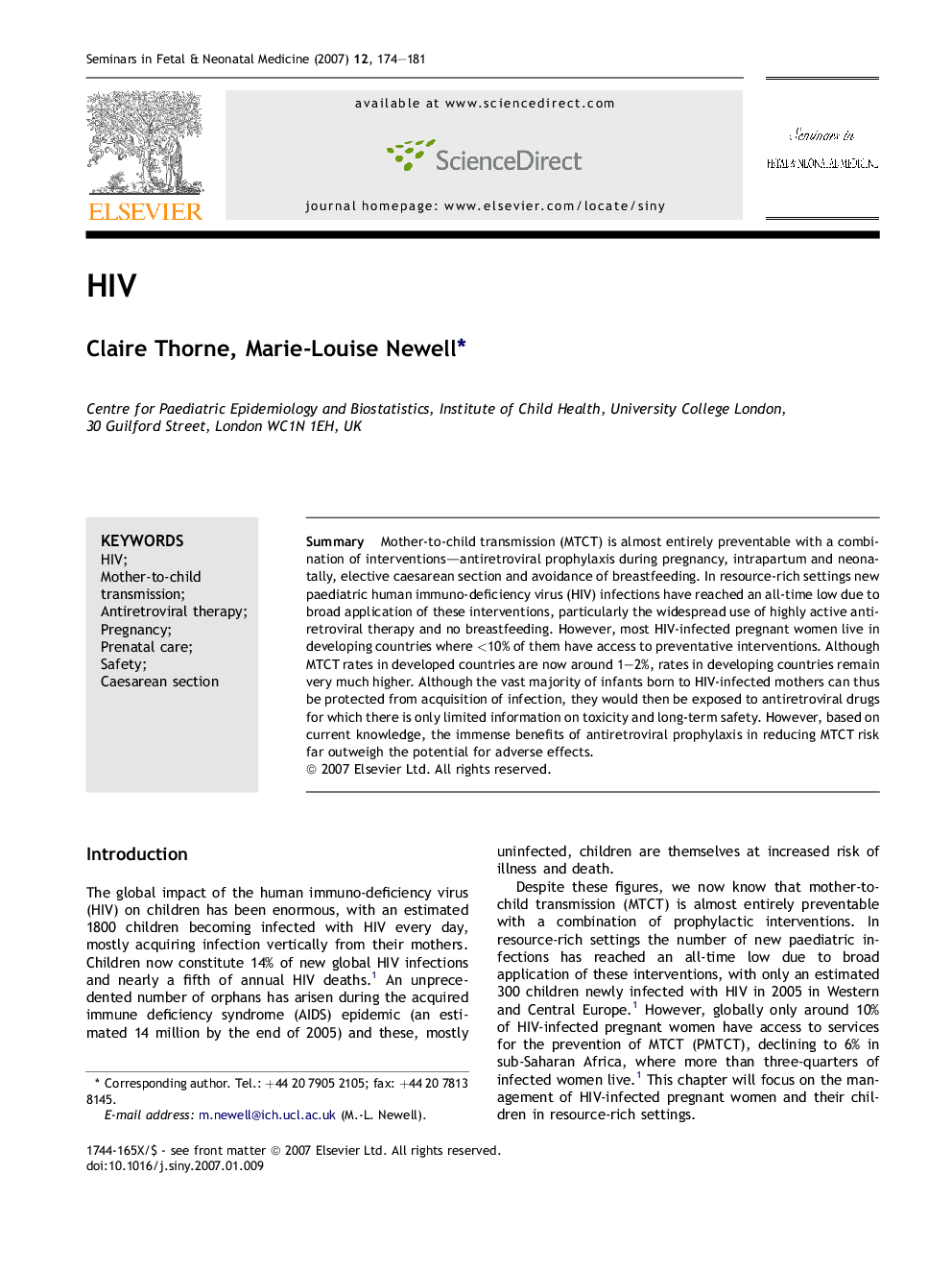| Article ID | Journal | Published Year | Pages | File Type |
|---|---|---|---|---|
| 3974671 | Seminars in Fetal and Neonatal Medicine | 2007 | 8 Pages |
SummaryMother-to-child transmission (MTCT) is almost entirely preventable with a combination of interventions—antiretroviral prophylaxis during pregnancy, intrapartum and neonatally, elective caesarean section and avoidance of breastfeeding. In resource-rich settings new paediatric human immuno-deficiency virus (HIV) infections have reached an all-time low due to broad application of these interventions, particularly the widespread use of highly active antiretroviral therapy and no breastfeeding. However, most HIV-infected pregnant women live in developing countries where <10% of them have access to preventative interventions. Although MTCT rates in developed countries are now around 1–2%, rates in developing countries remain very much higher. Although the vast majority of infants born to HIV-infected mothers can thus be protected from acquisition of infection, they would then be exposed to antiretroviral drugs for which there is only limited information on toxicity and long-term safety. However, based on current knowledge, the immense benefits of antiretroviral prophylaxis in reducing MTCT risk far outweigh the potential for adverse effects.
